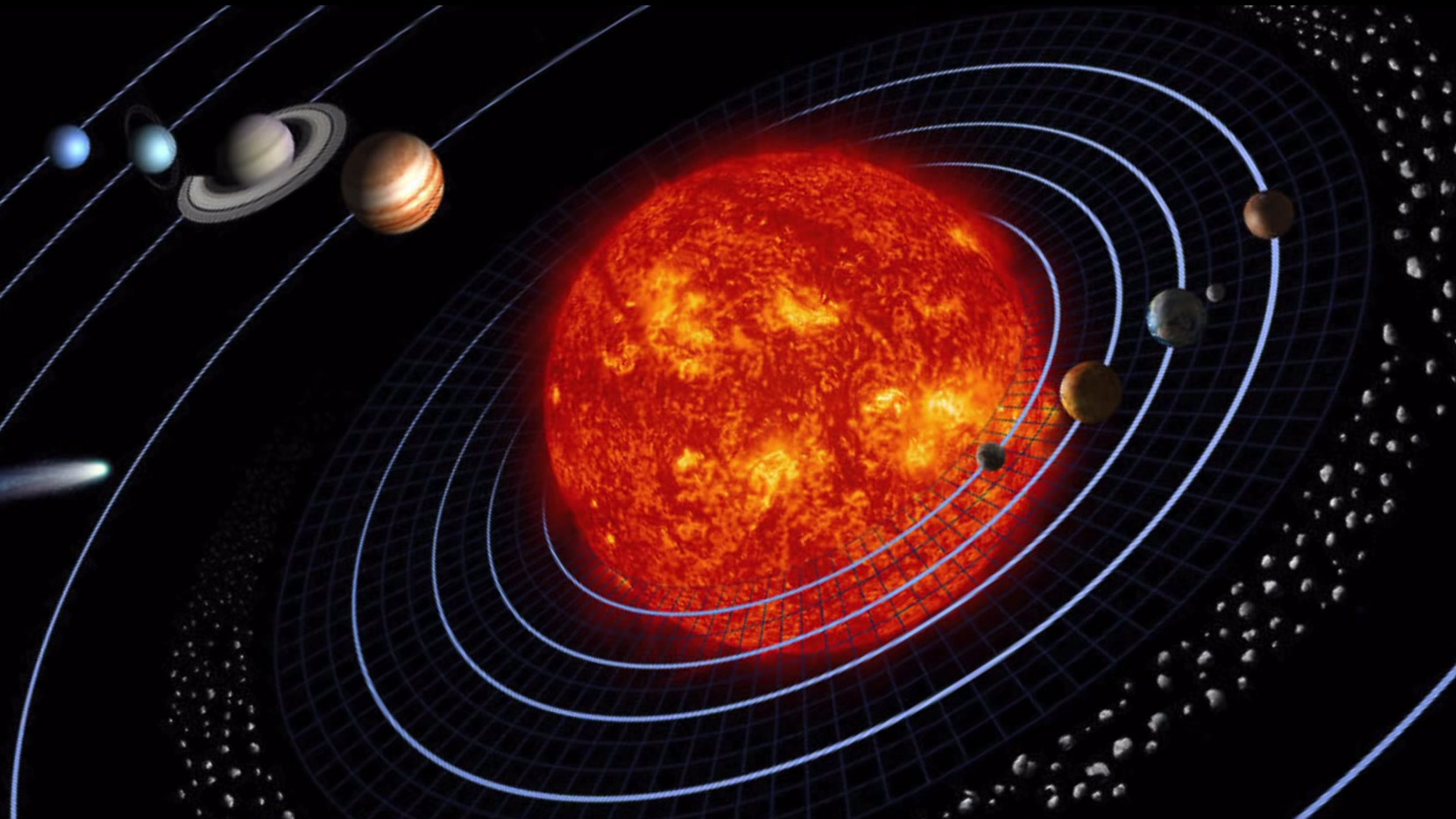Introductory Astronomy for Undergraduates
Gravity
The force of gravity is so unique compared to other fundamental forces. It is
responsible for keeping our planets and moons in orbit. For
example, without gravitational force, inertia will keep a planet
going completely straight instead of a circle in orbit. It also
has a part with how everything stays in place on earth.
Gravitational force is different when it comes to being in space
rather than on earth. The strength of gravity is six times smaller on the
moon.
The force of gravity at work as it's the force that helps to form solar system and maintains the stability.

f6d9443cab5342a2bf7d1ef2a6812454.jpgSpace Place in a Snap: The Solar System's Formation
(Credit:NASA/JPL Edu)
Let's find out What Happens to the Human Body in Space? ( Source: http://www.smithsonianmag.com)
Now let's think about what is gravity like within Earth? How would gravity affect an object in a hypothetical hole through the center of Earth? At the center of the planet, Earth's mass completely surrounds the object, pulling it outward in every direction. Assuming, for this thought experiment, that Earth is spherically symmetric and of uniform density, the attractive force between the object and each part of Earth would counteract a corresponding attractive force from the opposite direction. Consequently, the net gravitational force on the object would be zero.
Following this logic, the net gravitational force on an object inside a uniform spherical shell is always zero. At a given radius from Earth's center, the portion of Earth outside of that radius can be considered a shell; the net force of gravity on an object at a given radius from Earth's center is due only to the mass of Earth within that radius. As a result, as the object approaches the center of the planet and the radius decreases, the acceleration due to gravity would also decrease. Although the rate of change of velocity decreases, the object would continue to increase in velocity until it passes through the center of Earth. (Source: https://mass.pbslearningmedia.org/resource/oer08.sci.phys.maf.gravitynsn/gravity-at-earths-center/#.WYdKmumQxPY)
Mass and Weight
Mass and Weight are two often misused and misunderstood terms in Physics and Astronomy. Mass is the measure of the amount of matter an object contains. In contrast to weight, mass is constant regardless of where an object is in the universe. As the examples in this interactive activity illustrate, an object's weight can vary dramatically depending upon where it is in the universe. In fact, weight is a direct measure of the pull of gravity between an object and the body on which it is standing. The strength of this gravitational pull varies depending on the mass of the object, the mass of the body, and the distance between them. Please see the detailed explanation here. (http://hyperphysics.phy-astr.gsu.edu/hbase/mass.html)
Your W eight and Age on other Planets
Do you know your weight and age are relative ?
Lunar astronauts knew roughly what to expect when they landed on the Moon. Still, nothing could have entirely prepared them for moving around in a gravity that is one-sixth what we experience on Earth. An astronaut who weighed 73 kilograms (160 pounds) on Earth weighed less than 12 kilograms (27 pounds) on the Moon. This made leaping a couple of feet off the surface unbelievably easy and keeping one's feet firmly planted on the surface surprisingly difficult, especially when trying to do work.
Other planets and moons in our solar system have gravitational fields that differ from that of Earth. Jupiter's gravity, for example, is roughly 2.5 times that of Earth's, which means that the same 73-kilogram astronaut would weigh 184 kilograms (405 pounds) if he could stand on that planet's surface. The same astronaut hypothetically standing on the surface of the Sun would weigh 1,965 kilograms (4,331 pounds), roughly 27 times more than he weighed on Earth.
The relationship between mass and gravity is a direct one. For example, a planet with double the mass of another will exert twice the gravitational force. However, gravity decreases with distance, at a rate equal to the square of the distance--and distance is measured from the center of the two objects. This explains why the gravity of Jupiter, whose mass is 318 times that of Earth, is not 318 times Earth's gravity. Jupiter's huge diameter, 11 times that of Earth's, effectively increases the distance between its center and any object on its surface, thus reducing its gravity to a mere 2.5 times that of Earth (Source : PBS Learning Media).
Our age on Earth is based on ‘Earth years’. It is the number of times the Earth has orbitedthe Sun since the day we were born. If we were to live on another planet in the SolarSystem our age would be different because each planet takes a different amount of time toorbit the Sun. In other words each planet has a different year length.
- For other planets, divide your age in Earth days by the number of Earth days in a planet's year. The answer is your "new" age on that planet.
- Example: Revolution period of Mercury is 87.97 Earth days. For a person 20 years old on Earth:
20 x 365 = 7300 Earth days old
7300 / 87.97 (Earth days in Mercury's year) = 82.98
The 20 Earth-year-old person would be about 83 years old on Mercury!